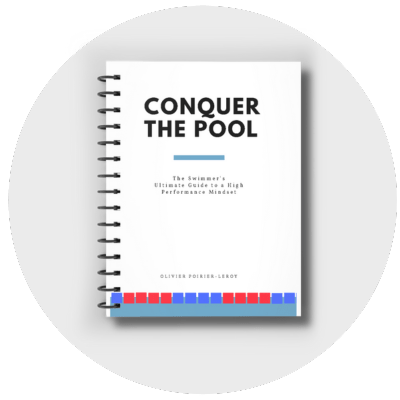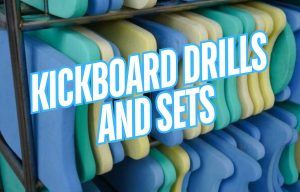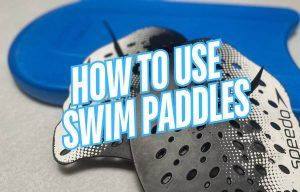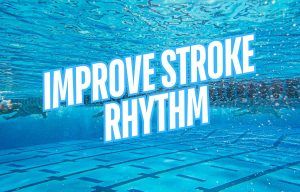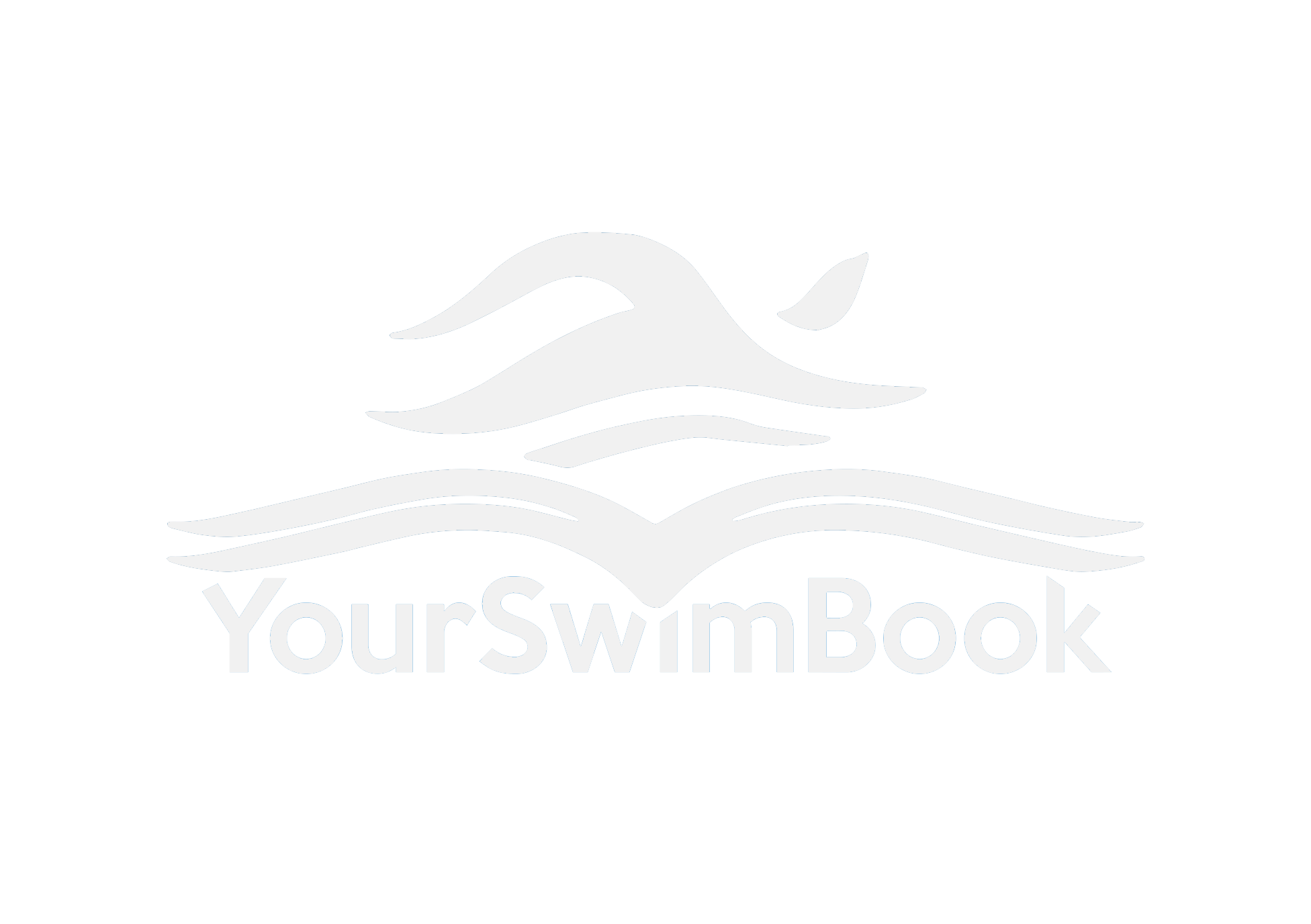Goooooooals!
If you stop any swimmer on your local pool deck and ask them if they have goals for their swimming the answer will almost invariably be, “yeeeess.” The goals might not be scrawled on their ceiling to stare at, or written on their hand as a constant reminder, but every athlete has goals and dreams for their swimming.
Which begs the question, if everyone has them, why do only a select few actually make the leap to achieving them? Why do so few swimmers leave the pool having accomplished setting what they dreamed about doing?
How’s Your Goal Setting Technique?
Goal setting is a process and a skill.
For most swimmers they set a goal, and that’s it. Goal accomplished. But that’s not how it works. Goal setting doesn’t stop the moment you write out your goal. It is an ongoing and evolving process, where we are continually tweaking what is working, extracting the things that are slowing us down, while taking the time to periodically evaluate on our goal setting plan.
Here is a quick and dirty 5-step plan to creating kickass goals for your swimming:
1. Make your swimming goals specific. Real specific.
“I want to swim fast” isn’t really a goal. It’s a very broad objective. Kind of like “I want to be rich” or “I want to have anti-gravity shoes.”
We all want to swim fast, but without a clear, tangible target or time it is difficult to fully take aim at it. “Fast” means something different to everyone at any given time – even yourself. Avoid any confusion or ambiguity by deciding on a specific time that leaves no room for doubt or wiggle room.
No: I want to swim fast next summer.
Yes: I want to post a 22.15 in the 50 yard freestyle next summer.
Having a clear, unequivocal target allows you to move on to the next step of the goal setting process, and that is breaking down that goal and creating a plan to achieve it. Think of it this way: leaving yourself with fuzzy, vague goals will make you feel equally fuzzy in terms of direction. Write out a super specific goal, on the other hand, and everything you have to do to achieve it comes into focus.
2. Develop a framework for success.
So now we have our big, awesome and exact goal. Next step is figuring out how the hell we are going to achieve it. Easiest way to do this is to start from the end point, and move backwards, plotting your journey from the end to where you stand at this very moment (or sit).
What are the times you will have to post between now and then that will demonstrate visible progress? What are the competitions, times and splits you’ll knock down on the way to your end goal?
When you are done that, list the things you will have to do to become that swimmer. Improving your start? Better underwater work? More aerobic work? Making 95% of practices? Actually swimming warm-down regularly? Write out the 5-6 areas where you will have to improve to pull you to your goal.
With the outline of where you need to improve, and the plot points of times you have to achieve between now and the end goal date, you should have a good starter blueprint for your goals. (You should also be feeling a little invigorated at this point of the process. It’s one thing to dream big goals, but quite another to actually have a visible and tangible checklist of the things you need to do to achieve it.)
This framework will also be critical in another way – it will help keep you focused on the smaller, manageable chunks of your goal. Focusing on that blisteringly fast time way out in the horizon can be demoralizing when you hit a rough spell in your training, with thoughts like “I’ll never get there, I still have so far to go..” creeping into your brain.
Keep your eyes on what is front of you instead of getting discouraged by the scope of the work ahead. You don’t climb a flight of stairs ten in one shot; you do it one at a time.
3. Recognize what meaningful action is. Don’t mistake being busy with being productive.
When you put together your blueprint, make sure to differentiate your actions between those that simply keep you busy versus those that actually produce results. Here are some examples of action items that are not action items:
- watching swimming videos on YouTube.
- buying a new bathing suit.
- emptying your swim bag after practice.
Things like this might be necessary, but these are tasks that have to be done anyways, and shouldn’t be on your goal action list. These, on the other hand, should be:
- show up to practice 15 minutes early each day.
- breath bi-laterally during warm-up and warm-down.
- do 200 crunches after each PM practice.
- do 5 minutes of vertical kick on Mondays and Wednesdays.
If you are having doubt about whether something you are doing is in column A or column B, ask yourself this: Will this task bring me closer to my goal? Yes or no? Will showing up early to practice and doing extra mobility work help you get to your goal? Yes. Will getting lost in watching swimming-related videos on YouTube help you swim faster? Almost certainly not.
4. Track your progress.
Alrighty then. We have goals, a blueprint, and hopefully an understanding of what meaningful action is at this point. Next up, it is time to commit to tracking your progress in the pool.
Tracking your progress has a few important functions:
- It will keep you motivated. You know that feeling that accompanies beating a personal best time? The warm and fuzzies in your tummy that burn with pride? Yeah, those bad boys. You can unleash them on the regular simply by tracking your progress. Seeing improvements from week to week will motivate you to keep at it, and help propel you with even more intensity at that goal of yours.
- It will tell you when to back off. One of the hardest things in the world is stepping back when you are on a roll. You’ll be kicking ass and taking names every day at practice, but you’ll find that your top speed taps out, that the times you are posting in workouts are not only not at your best, but are actually regressing. Taking the time necessary to deload, and allow the adaptations necessary to take place can be an exercise in will and patience, but it is a requirement in allowing your body to recover and regenerate so that you can come back even stronger. Seeing that you are posting the same times day in and day out is a blaring red flag that it is time to back off, or at the very least to switch things up. Having your results on paper in front of you will give you an accurate indication of whether this is the case.
- It will help you create smarter goals. Seeing your progress in front of you, and thereby getting a thorough understanding of how fast you progress will grant you the superhuman ability (granted I used superhuman fairly liberally there) to set goals that are realistic. When I say realistic I don’t mean easy or boring, but rather goals that test the limits of your abilities while also still being attainable. Otherworldly goals, and a lack of understanding of how quickly you can get there, is one of the quickest ways to get discouraged. Tracking your progress gives you this insight to create better, awesomer goals that you are more likely to stick to.
5. Evaluate what is working.
Einstein nailed it over the head, “Insanity: doing the same thing over and over again and expecting a different result.”
The allure of being comfortable leads to many of us to wallow in our habits, even if it means that the habits are not good for us. Breathing every two strokes for thousands of yards on end. Breathing into the walls. Not streamlining when we get tired. That’s where periodic evaluations come into play, to shake us out of our apathy and get the perspective necessary to move forward.
Your goal setting skills will always be a work in progress. And this is good! Simply because you set a goal, follow all the tips above and come up short doesn’t make the process faulty. Rather, moments of failure and setbacks provide an opportunity for you to tweak and gain the feedback necessary to do it even better the next time around.
When things go awry, sit down (perhaps with your coach and folks as well) and as objectively as possible, discern—
- where did you fall short on your expectations?
- what were some things that you didn’t anticipate or see coming?
- was the goal you set realistic given the effort you put in?
- what lessons will you pull from the process to apply next time?
Use the process as a learning tool to optimize your efforts and become even more efficient the next time around. Conversely, if you totally killed it, assess what worked so that you can continue to apply the positive stuff on your next go around–
- Was the goal too easy? Can you stretch yourself and make it more difficult next time around?
- In what areas did you see the most improvement?
- Which aspects of your performance had the biggest impact on your overall result?
Take Your Swimming to the Next Level
YourSwimBook is a log book and goal setting guide designed specifically for competitive swimmers. It includes a ten month log book,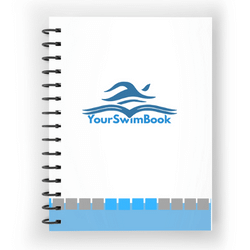 comprehensive goal setting section, monthly evaluations to be filled out with your coach, and more.
comprehensive goal setting section, monthly evaluations to be filled out with your coach, and more.
Learn 8 more reasons why this tool kicks butt now.
Join the YourSwimBook weekly newsletter and get motivational tips and more straight to your inbox. Sign up for free here.







